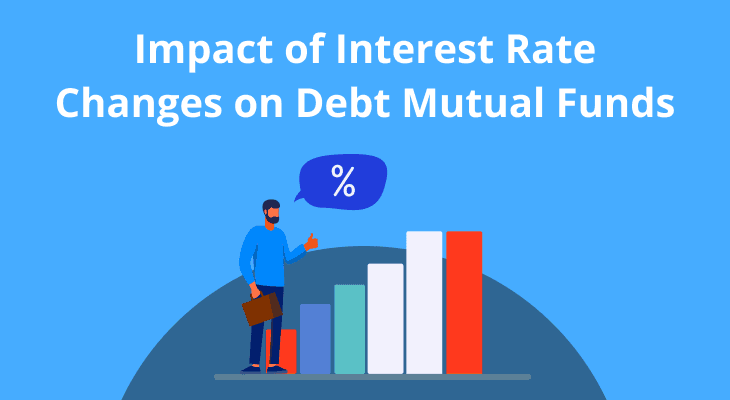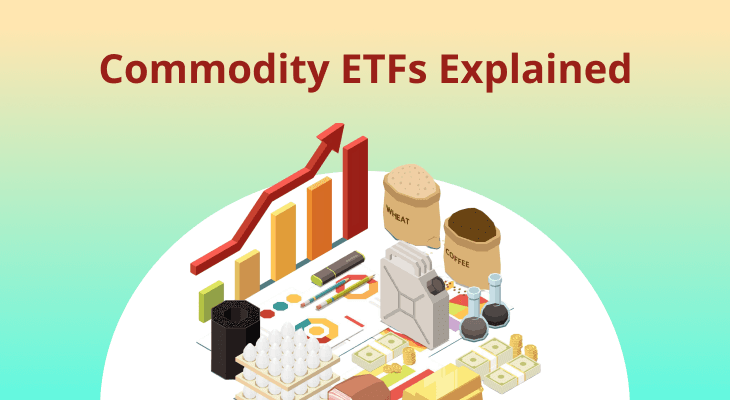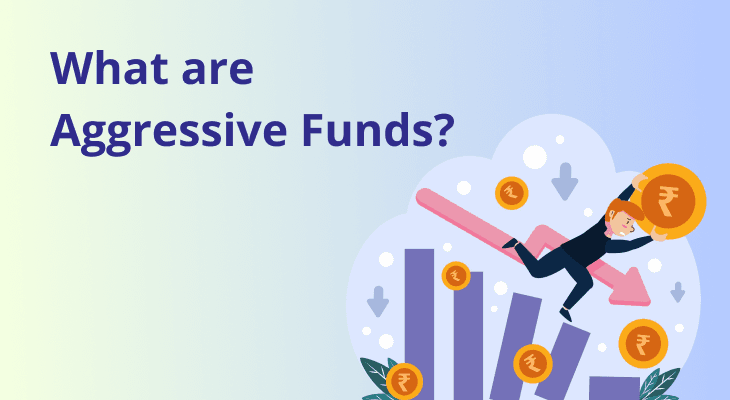
Table of content
- What Are Debt Mutual Funds and How Do They Work?
- How Interest Rates Influence Debt Mutual Fund Performance
- The Relationship Between Interest Rates and Bond Prices
- Short-Term vs. Long-Term Debt Funds: How They React to Interest Rate Changes
- Impact of Rising Interest Rates on Debt Mutual Funds
- How Falling Interest Rates Affect Debt Mutual Funds
- Strategies for Managing Interest Rate Risk in Debt Mutual Funds
Understanding the Impact of Interest Rate Changes on Debt Mutual Funds
Debt mutual funds are a popular investment choice for those seeking relatively stable returns with lower risk compared to equities. However, these funds are not immune to market dynamics, particularly changes in interest rates. Interest rate fluctuations can significantly influence the performance of debt mutual funds, affecting their Net Asset Value (NAV) and overall returns.
For investors, especially beginners, understanding how interest rates impact debt mutual funds is crucial. This knowledge enables informed decision-making and effective portfolio management, aligning investments with financial goals and risk tolerance.
What Are Debt Mutual Funds and How Do They Work?
Debt mutual funds pool money from multiple investors to invest in fixed-income securities. These securities include government bonds, treasury bills, corporate bonds, commercial papers, etc. The primary objective of debt mutual funds is to provide investors with regular income and capital preservation, making them a preferred choice for conservative investors.
Key Characteristics:
- Fixed Returns: The securities in which debt funds invest offer fixed interest payments.
- Maturity Periods: These securities have predefined maturity periods, ranging from short-term (a few months) to long-term (several years).
- NAV Sensitivity: The NAV of debt funds fluctuates based on interest rate movements and credit quality of the underlying securities.
- Types: Debt mutual funds come in various categories, each designed to cater to different investment horizons, risk appetites, and financial goals. Here are some popular types:
- Overnight Funds: Invest in securities with a maturity of one day. Ideal for parking surplus funds for very short durations.
- Liquid Funds: Invest in debt and money market instruments with maturities up to 91 days. Suitable for short-term investments and emergency funds.
- Ultra Short Duration Funds: Invest in instruments with maturities between 3 to 6 months with returns and risks that are marginally higher than liquid funds.
- Low Duration Funds: Invest in securities with maturities between 6 to 12 months. Suitable for investors with a short-term investment horizon.
- Money Market Funds: Invest in money market instruments like treasury bills and commercial papers with maturities up to one year. Aim to provide high liquidity with moderate returns.
- Short Duration Funds: Invest in instruments with maturities between 1 to 3 years. Suitable for investors seeking better returns than traditional savings options with moderate risk.
- Medium Duration Funds: Invest in debt instruments with maturities between 3 to 4 years. Offer higher returns with increased interest rate risk.
- Long Duration Funds: Invest in securities with maturities greater than 7 years. Suitable for investors with a long-term horizon and higher risk tolerance.
- Dynamic Bond Funds: Have the flexibility to invest across durations based on interest rate outlook. Fund managers actively manage the portfolio to optimize returns.
- Corporate Bond Funds: Invest at least 80% of assets in high-rated corporate bonds. Aim to provide better returns than government securities with slightly higher risk.
- Credit Risk Funds: Invest at least 65% of assets in lower-rated corporate bonds. Offer higher returns with increased credit risk.
- Banking and PSU Funds: Invest predominantly in debt instruments of banks, public sector undertakings, and public financial institutions. Considered relatively safer with moderate returns.
- Gilt Funds: Invest exclusively in government securities. Carry no credit risk but are sensitive to interest rate changes.
- Floating Rate Funds: Invest in instruments with variable interest rates. Suitable for rising interest rate environments.
- Fixed Maturity Plans (FMPs): Closed-ended funds that invest in fixed income securities with maturities aligned to the fund's tenure. Offer predictable returns if held till maturity.
How Do Debt Mutual Funds Work?
When you invest in a debt mutual fund, your money is combined with that of other investors to create a substantial corpus. A professional fund manager then allocates this corpus across various debt instruments based on the fund's investment objective. The returns generated from these investments come in two forms:
- Interest Income: The fund earns interest from the debt securities it holds. This interest is distributed to investors in the form of dividends (if opted) or reinvested, leading to an increase in the fund's Net Asset Value (NAV).
- Capital Gains or Losses: The value of debt securities can fluctuate based on changes in interest rates. If the fund sells a security for more than its purchase price, it realizes a capital gain, which contributes to the fund's overall returns. Conversely, selling at a lower price results in a capital loss.
Investors choose debt mutual funds for diversification, regular income, and lower volatility compared to equity funds. It's important to note that while debt mutual funds are generally considered less volatile than equity funds, they are not entirely risk-free. They are subject to interest rate risk, credit risk, and liquidity risk, which can impact returns.
How Interest Rates Influence Debt Mutual Fund Performance
Interest rates and debt mutual fund returns share an inverse relationship. When interest rates rise, the prices of existing bonds fall, leading to a decrease in the NAV of debt funds. On the other hand, a decline of interest rates makes existing bonds with higher interest rates become more attractive, increasing their prices and, subsequently, the NAV of debt funds
This inverse relationship is fundamental to understanding the performance dynamics of debt mutual funds in varying interest rate environments.
The Relationship Between Interest Rates and Bond Prices
To comprehend the impact of interest rates on debt mutual funds, it's essential to understand how bond prices react to interest rate changes.
Inverse Relationship Explained:
- Interest Rate Rise: New bonds are issued at higher interest rates, making existing bonds with lower rates less attractive. This leads to a decrease in the price of existing bonds.
- Interest Rate Fall: New bonds offer lower interest rates, making existing bonds with higher rates more valuable, thus increasing their prices.
The extent of price change in response to interest rate fluctuations is measured by a bond's duration. Longer-duration bonds are more sensitive to interest rate changes, experiencing more significant price fluctuations.
Short-Term vs. Long-Term Debt Funds: How They React to Interest Rate Changes
Debt funds are categorised based on the maturity period of the securities they hold. Their sensitivity to interest rate changes varies accordingly.
Short-Term Debt Funds:
- Composition: Invest in securities with shorter maturities (typically less than 3 years).
- Interest Rate Sensitivity: Lower sensitivity due to shorter duration.
- Risk Profile: Less volatile, suitable for conservative investors or those with short-term goals.
Long-Term Debt Funds:
- Composition: Invest in securities with longer maturities (more than 3 years).
- Interest Rate Sensitivity: Higher sensitivity, leading to greater NAV fluctuations.
- Risk Profile: More volatile, suitable for investors with a higher risk appetite and longer investment horizons.
Understanding the duration and maturity profile of a debt fund is crucial in assessing its potential performance amid interest rate changes.
Impact of Rising Interest Rates on Debt Mutual Funds
When interest rates increase, the immediate effect on debt mutual funds is a decline in the NAV. This is due to the decrease in the market value of existing bonds, which offer lower interest rates compared to new issuances.
Consequences:
- Capital Loss: Investors may experience a decline in the value of their investments.
- Reduced Returns: Overall returns may diminish, especially in long-duration funds.
- Portfolio Rebalancing: Fund managers may shift to shorter-duration securities to mitigate losses.
Investors holding long-term debt funds during rising interest rate periods may face more significant NAV declines compared to those in short-term funds.
How Falling Interest Rates Affect Debt Mutual Funds
In a declining interest rate environment, existing bonds with higher interest rates become more valuable, leading to an increase in their prices and, consequently, the NAV of debt mutual funds.
Benefits:
- Capital Gains: Investors may realise gains from the appreciation of bond prices.
- Enhanced Returns: Overall returns of debt funds improve, particularly in long-duration funds.
- Attractive Investment: Debt funds become more appealing to investors seeking stable returns.
Investors can capitalise on falling interest rates by investing in long-term debt funds, which are more sensitive to such changes and offer higher potential gains.
Strategies for Managing Interest Rate Risk in Debt Mutual Funds
To navigate the challenges posed by interest rate fluctuations, investors and fund managers employ various strategies:
1. Duration Management:
Duration measures a bond's sensitivity to interest rate changes. Funds with shorter durations are less affected by rate fluctuations. By adjusting the portfolio's average duration based on interest rate forecasts, fund managers can manage potential impacts. For instance, in anticipation of rising rates, reducing the portfolio's duration can help minimise losses.
2. Laddering:
This strategy involves investing in bonds with staggered maturities. As bonds mature at different times, the proceeds can be reinvested at prevailing interest rates, providing flexibility and reducing reinvestment risk. Laddering helps in smoothing out the impact of interest rate volatility over time.
3. Barbell Strategy:
In this approach, investments are concentrated in short-term and long-term maturities, with minimal allocation to intermediate terms. The short-term bonds provide liquidity and reduce risk, while long-term bonds offer higher yields. This mix can balance the portfolio's sensitivity to interest rate changes.
4. Active Portfolio Rebalancing:
Regularly reviewing and adjusting the portfolio in response to interest rate movements can help in maintaining the desired risk-return profile. This may involve shifting allocations between different maturities or credit qualities based on market conditions.
5. Utilising Target Maturity Funds
Target Maturity Funds (TMFs) invest in bonds that mature around the same time as the fund's maturity. By holding these bonds to maturity, TMFs can reduce the impact of interim interest rate fluctuations, offering predictable returns if held until maturity.
Conclusion
Interest rate changes play a pivotal role in the performance of debt mutual funds. Understanding the inverse relationship between interest rates and bond prices is crucial for investors aiming to navigate the fixed-income landscape effectively.
By comprehending how different debt funds react to interest rate movements and employing strategies to manage associated risks, investors can make informed decisions aligned with their financial goals and risk tolerance.
As with all investments, staying informed and proactive is key to optimising returns and mitigating risks in the ever-evolving financial markets.
FAQ
How do interest rate changes affect debt mutual fund returns?
Interest rates and bond prices share an inverse relationship. When interest rates rise, existing bonds usually see a decrease in their prices, leading to a reduction in the Net Asset Value (NAV) of debt mutual funds holding these bonds. On the other hand, when interest rates fall, existing bonds become more valuable, often increasing their prices and, subsequently, the NAV of the funds.
Why do long-duration debt funds react more to interest rate changes?
Long-duration debt funds invest in bonds with longer maturities, making them more sensitive to interest rate fluctuations. A small change in interest rates can lead to significant price changes in long-term bonds, affecting the NAV of these funds more than those with shorter durations.
What is duration, and how does it influence a debt fund's sensitivity to interest rates?
Duration is a measure of a bond's sensitivity to interest rate changes, expressed in years. A higher duration indicates greater sensitivity, meaning the bond's price will fluctuate more with interest rate changes. Debt funds with higher average durations will experience more significant NAV changes in response to interest rate movements.
How do rising interest rates impact different types of debt funds?
- Short-term debt funds: Less affected due to lower durations.
- Long-term debt funds: More impacted as longer maturities are more sensitive to rate changes.
- Dynamic bond funds: Impact varies based on the fund manager's strategy in adjusting the portfolio's duration.
What strategies can investors use to manage interest rate risk in debt mutual funds?
- Laddering: Investing in bonds with staggered maturities to spread risk.
- Barbell strategy: Combining short-term and long-term bonds to balance risk and return.
- Duration management: Adjusting the portfolio's average duration based on interest rate outlook.
- Investing in floating rate funds: These funds invest in instruments with variable interest rates, which adjust with market rates.
Are there debt funds that perform better in a rising interest rate environment?
Yes, funds like floating rate funds and short-duration funds are less sensitive to interest rate increases and may perform relatively better when rates rise.
How do falling interest rates benefit debt mutual funds?
When interest rates decline, existing bonds with higher coupon rates become more attractive, leading to an increase in their prices. This price appreciation boosts the NAV of debt mutual funds holding these bonds, resulting in higher returns for investors.
Should I switch between debt funds based on interest rate expectations?
Should I switch between debt funds based on interest rate expectations?
How do interest rate changes affect the income generated from debt mutual funds?
Interest rate changes primarily impact the capital gains or losses component of debt fund returns. The interest income from the underlying bonds remains relatively stable unless the fund manager actively trades the portfolio.
Where can I find information on a debt fund's sensitivity to interest rate changes?
You can refer to the fund's fact sheet or the Asset Management Company's (AMC) website, which typically provides details like the fund's average duration, maturity profile, and portfolio composition. These metrics can help assess the fund's sensitivity to interest rate movements.


